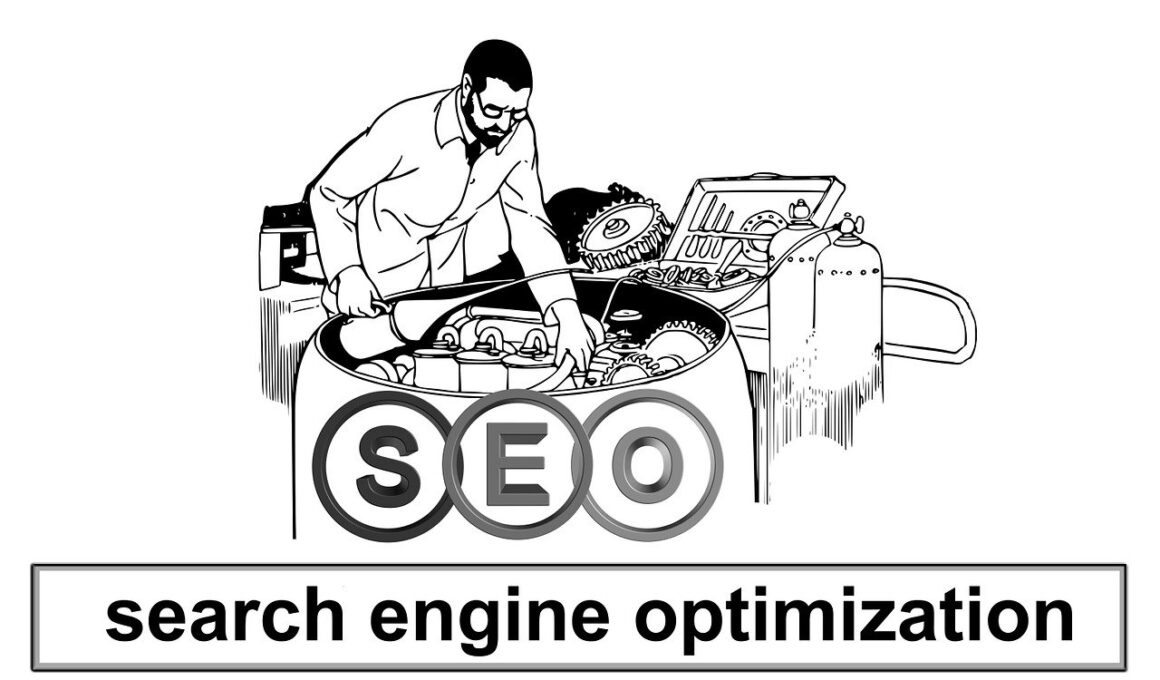How to Speed Up Your WordPress Site for Better SEO Performance
Improving the speed of your WordPress site is crucial for SEO performance. Search engines, especially Google, prioritize faster-loading websites in their rankings. When optimizing your site, focus on various elements that can impact loading times. First, consider the quality and size of your images. Large images can significantly slow down your site. You can compress images without losing quality using tools like TinyPNG or ImageCompressor. Second, check your hosting service. Opting for a reliable web hosting provider is essential for your site’s speed. Look for hosts that offer features such as built-in caching or content delivery networks (CDNs). Another critical factor is the use of caching plugins like W3 Total Cache or WP Super Cache. These plugins create static versions of your pages, significantly reducing load times for repeat visitors. Lastly, minimize the number of plugins you use. Each additional plugin adds layers to your site that can hinder performance. Regularly audit your plugins to ensure they are necessary and functioning efficiently.
The Importance of Lightweight Themes
Choosing a lightweight theme is essential for maximizing the speed of your WordPress site. Themes that are unnecessarily bloated with features can severely impact your load times. Opt for themes that are optimized for performance, and avoid those with excessive graphics or animations. Popular choices include Astra, GeneratePress, and OceanWP. These themes not only look good but also load quickly, enhancing user experience. To further improve loading speed, consider customizing your theme by limiting the use of external fonts and scripts. Instead of using resource-heavy Google Fonts, opt for standard web-safe fonts that don’t require additional loading time. Regularly update your theme and plugins to ensure they are utilizing the latest performance improvements and security updates. Keep in mind that a fast-loading theme can positively impact bounce rates, increasing the likelihood of conversions as visitors feel more satisfied with their experience. Additionally, utilize tools like GTmetrix or Google PageSpeed Insights to analyze your website speed and implement necessary adjustments accordingly.
Implementing a Content Delivery Network (CDN) is another effective way to speed up your WordPress site. A CDN allows your website content to be distributed across multiple servers around the globe. This means that data is served to users from the server closest to them, significantly reducing loading times. Popular CDN providers include Cloudflare, MaxCDN, and Akamai. These services not only enhance speed but also improve website security by providing DDoS protection and SSL encryption. Integrating a CDN with your website is typically straightforward, especially with plugins designed for that purpose. Additionally, consider enabling gzip compression through your server settings or using plugins like WP Rocket. Gzip compression reduces the size of your HTML, CSS, and JavaScript files, making them quicker to transfer to users. Always test your website speed before and after implementing a CDN to measure effectiveness. Keep monitoring your site’s performance using various tools, maintaining it as an integral part of your ongoing SEO strategy.
Minifying CSS, JavaScript, and HTML
Minifying CSS, JavaScript, and HTML is a vital step to achieving faster loading times for your WordPress website. When these code files are optimized, they are reduced in size by eliminating unnecessary spaces, comments, and formatting. This process helps to reduce the overall load time because less data needs to be transferred to users. Tools like Autoptimize and WP Minify can automatically minify your files, simplifying the process for you. Furthermore, combining multiple scripts and stylesheets into single files can also enhance performance. Fewer requests to the server decrease loading times, providing a seamless experience for visitors. However, ensure to test your website after minifying, as errors can occasionally occur due to code conflicts. Utilize the built-in tool in your caching plugin to manage any minification settings effectively. Keep in mind that all these optimizations not only aid in speed but also contribute to better page rank, directly influencing your SEO strategy in a positive manner.
Another effective method of enhancing your WordPress site’s performance is regularly maintaining and optimizing your database. Over time, databases can become cluttered with data like post revisions, spam comments, and transient options that slow down your site. Implementing database cleaning can clear up unnecessary data, making your site faster. Tools such as WP-Optimize or Advanced Database Cleaner can help you automate the process of cleaning and optimizing your database. Regular backups are essential before making significant changes, ensuring you can revert if anything goes wrong. Schedule regular maintenance to keep your database clean; this can include deleting old backups and managing comment spam. Additionally, consider using the InnoDB storage engine, which supports larger databases and offers better performance for high-traffic sites. An optimized database is critical for overall site functionality, enhancing user experience and boosting your search engine ranking indirectly by maintaining a site that loads efficiently.
Removing Unnecessary Redirects
Eliminating unnecessary redirects can dramatically improve the speed of your WordPress site while enhancing SEO performance. Each redirect creates additional HTTP requests, contributing to increased loading times. To identify and fix these issues, use tools like Screaming Frog or Ahrefs to conduct a website audit. They can help you uncover redirect chains and loops that may lead your visitors down a rabbit hole while they wait for the site to load. Aim to replace redirects with direct links wherever possible to streamline user experience. When it’s necessary to maintain redirects, make sure they are in place correctly and updated for best results. Also, ensure that your site has a 301 redirect in place for any permanent URL changes, as this helps preserve SEO equity. Furthermore, minimizing redirects provides a smoother browsing experience, thus decreasing bounce rates. Consistently revisiting your website structure aligns your content with SEO best practices, creating a compelling experience that encourages visitors to stay longer on your site.
Lastly, don’t underestimate the significance of using optimized hosting solutions. Selecting a reliable WordPress hosting provider can be a game changer for your website’s speed. Look for hosting that specializes in WordPress, as they are better equipped to optimize factors like caching, uptime, and support. A managed hosting provider often includes built-in performance enhancements tailored for WordPress. Providers like Kinsta, SiteGround, and WP Engine offer excellent WordPress hosting options with superior speed and uptime guarantees. When evaluating hosting plans, consider factors such as the location of the servers and whether they offer scalability for future growth. Moreover, ensure your hosting includes support for SSL certificates. HTTPS not only improves security but also is a ranking factor for search engines. Research thoroughly before selecting a host; read reviews, perform tests, and consider your specific needs. A solid hosting platform can provide the foundation necessary for a fast, reliable website that excels in SEO performance, creating the best experience for users visiting your site.


